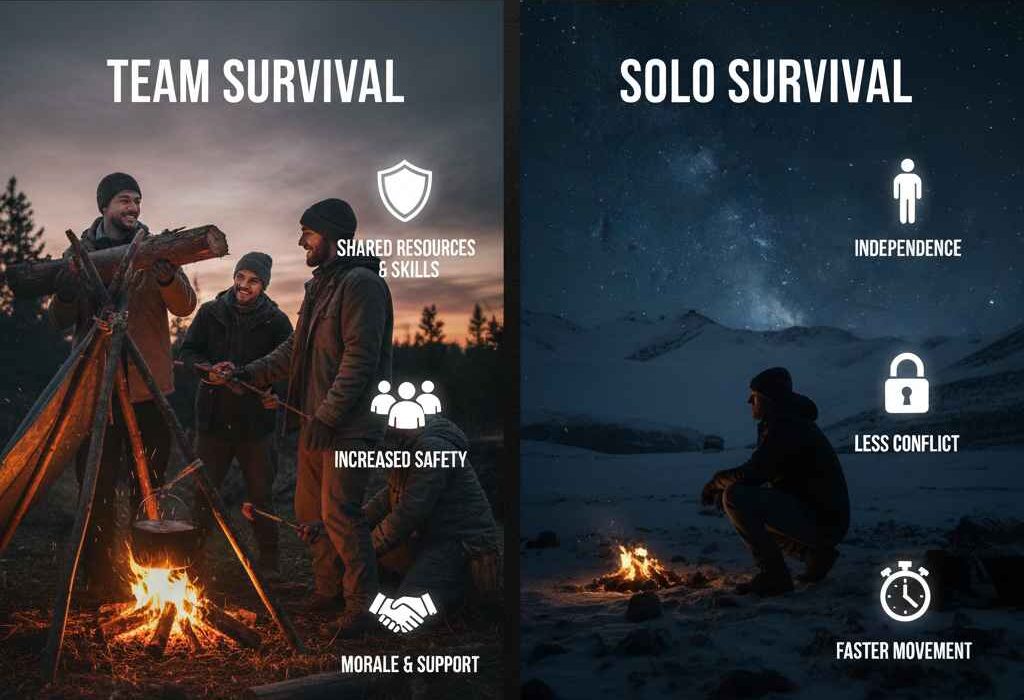When disaster strikes, survival strategies can vary drastically depending on whether you’re alone or part of a team. Each scenario comes with unique advantages and challenges. Understanding the differences can help you prepare, make smarter decisions, and increase your chances of making it through dangerous situations.
Solo Survival: Independence at a Cost
Surviving alone gives you complete control over decisions, pace, and priorities. You don’t have to compromise on food, shelter, or travel speed, and you can adapt immediately to changing circumstances.
Pros:
- Autonomy: You make all decisions without negotiation or conflict.
- Stealth and Speed: Solo movement is quieter and more agile.
- Resource Control: No need to share limited food, water, or gear.

Cons:
- Mental Strain: Isolation can lead to panic, depression, or poor decision-making.
- Limited Skills: You rely entirely on your own knowledge and abilities.
- Physical Limitation: Tasks like carrying heavy gear or building shelters are harder without assistance.
Team Survival: Strength in Numbers
Being part of a survival team can multiply your chances of success—but only if the group works well together. Diverse skills, shared workload, and collective problem-solving make challenging environments easier to handle.
Pros:
- Shared Skills: Team members can complement each other’s expertise—navigation, first aid, or fire-making.
- Morale Support: Psychological resilience improves when you’re not alone.
- Workload Distribution: Tasks like gathering food, building shelters, and standing watch become manageable.

Cons:
- Conflict Risk: Different personalities or stress levels can lead to arguments or poor decisions.
- Resource Competition: Food, water, and gear must be shared, creating potential shortages.
- Slower Movement: Group decisions and varying fitness levels can reduce speed and flexibility.
Hybrid Approach: Solo Tasks Within a Team
Many survival experts advocate for a hybrid method: maintain team coordination for safety and resource-sharing, but allow individuals to operate independently when speed or stealth is critical. For example, one person gathers water while another scouts or builds shelter. This balance maximizes efficiency while minimizing risks associated with group survival.
Final Thoughts
Whether alone or with a team, survival success hinges on preparation, adaptability, and mindset. Solo survival demands self-reliance and mental toughness, while team survival relies on collaboration, communication, and shared responsibility. Understanding the pros and cons of each approach lets you adapt your strategy to the environment and situation—making it more likely you’ll emerge alive and well.

















